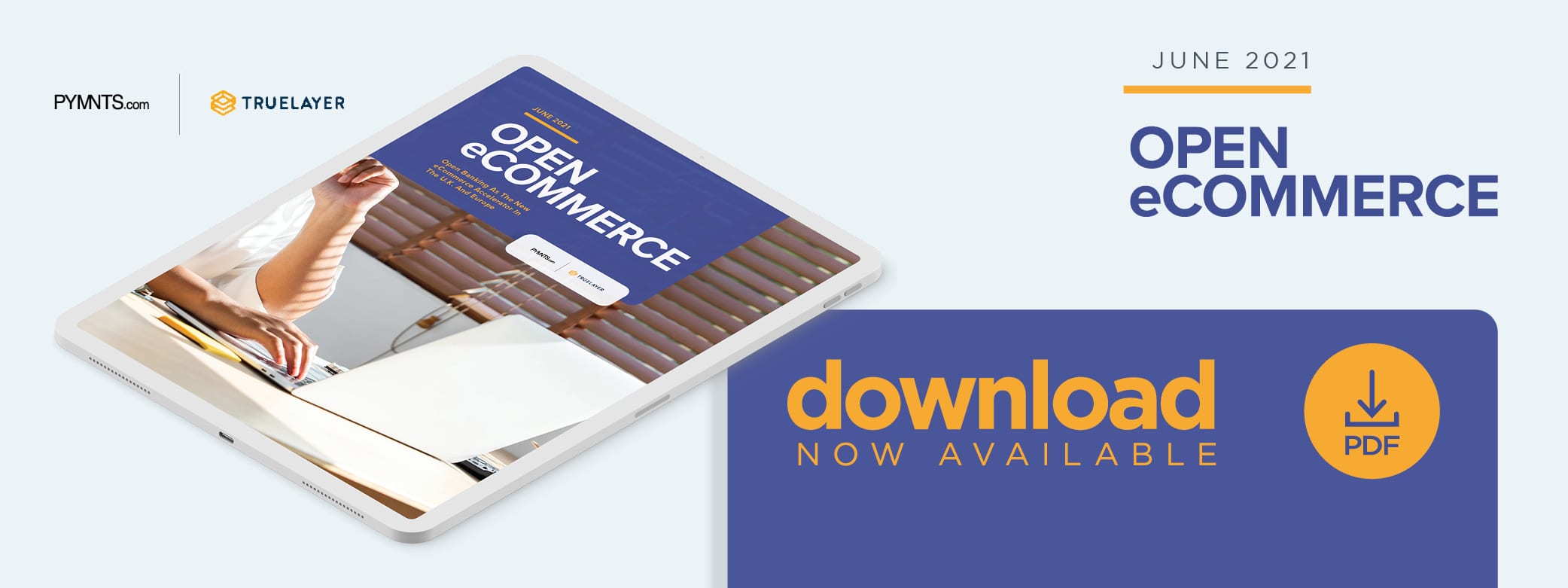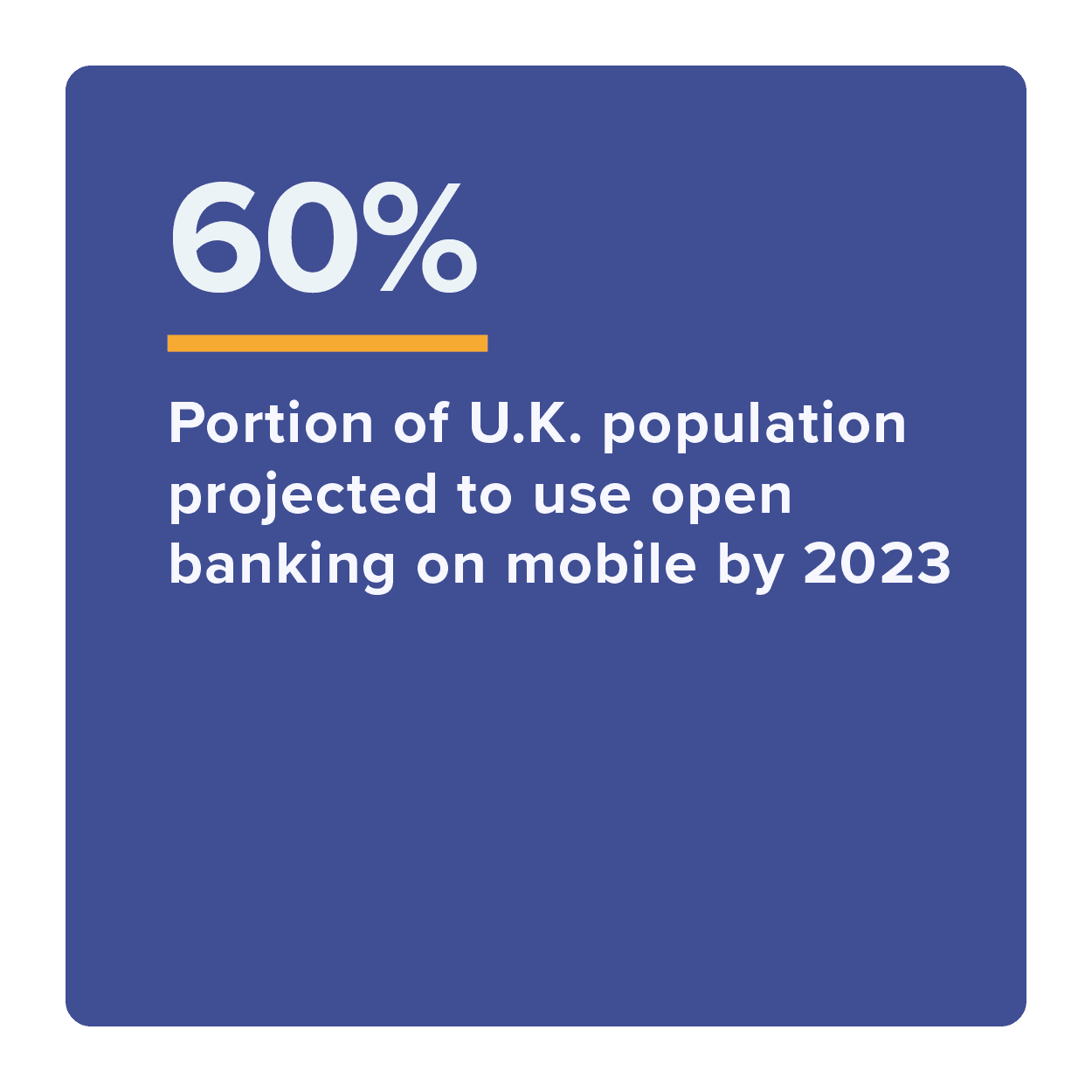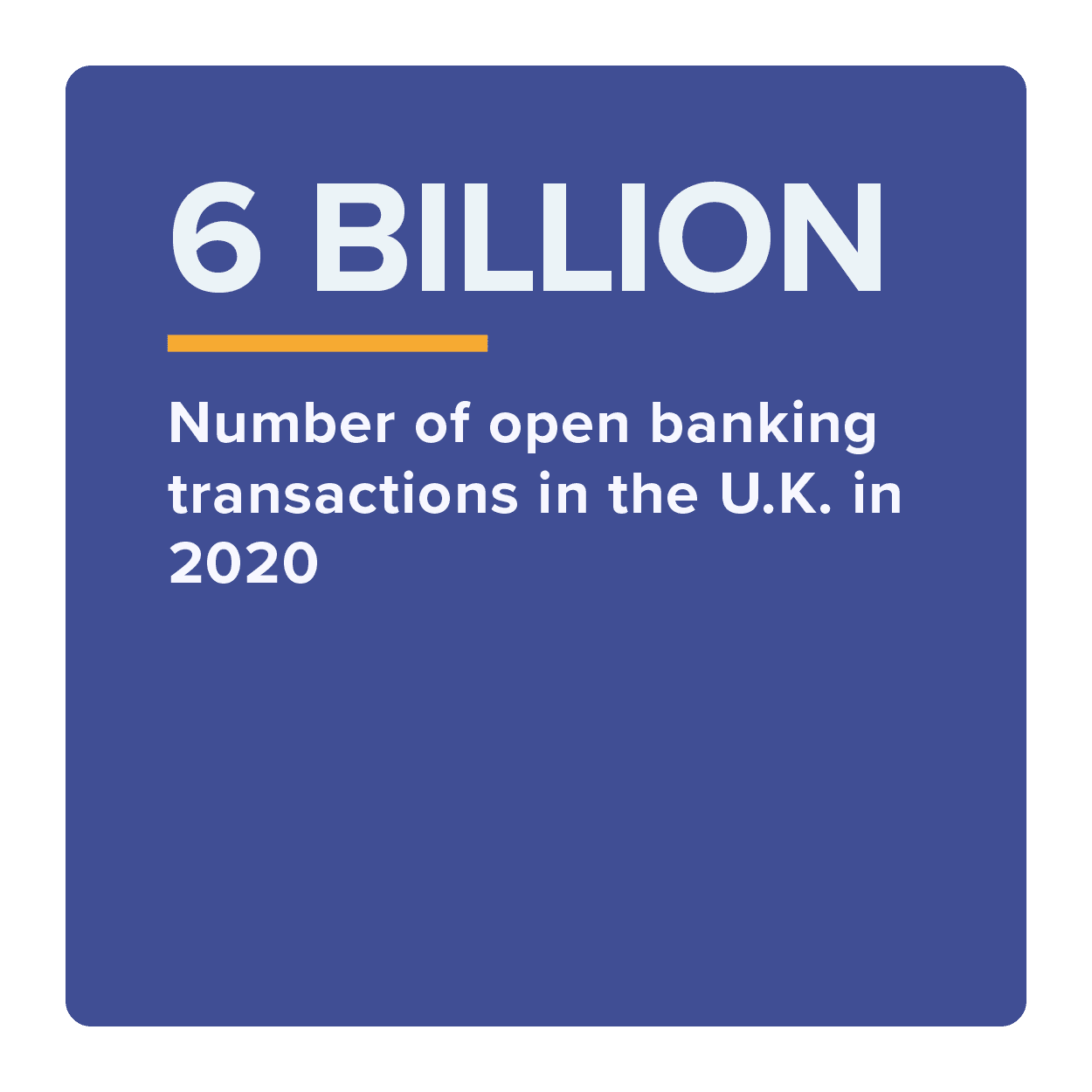NEW REPORT: Open Banking Accelerates EU Merchants New eCommerce Plans

 Globally, consumers and merchants are adopting open banking technologies as the go-to option for frictionless payments in eCommerce.
Globally, consumers and merchants are adopting open banking technologies as the go-to option for frictionless payments in eCommerce.
According to a new PYMNTS report, Open eCommerce: Open Banking As The New eCommerce Accelerator In The U.K. And Europe, a PYMNTS collaboration with TrueLayer, open banking technology has become a critical component of eCommerce growth. It facilitates rapid user authentication and instant bank-to-bank payments. As digital marketplaces, merchants and brands launch or expand eCommerce offerings, the ability to quickly and securely launch a scalable payments infrastructure increases in importance.
Today, open banking is powering some of the world’s leading eCommerce sites and apps, providing consumers with seamless payment options that significantly reduce the risk of payments fraud (no credit or debit card details are saved with the merchant) while enabling them to purchase with a few clicks and receive refunds when needed just as easily.
According to the report, open banking adoption has surged in the United Kingdom and Europe since 2018 due to its flexibility and growing popularity with banks and consumers alike. The volume of application programming interface (API) calls using the technology in the U.K. rose from 66.8 million in 2018 to 6 billion in 2020. More open banking payments were processed in the U.K. in February 2021 than in all of 2019.
Not only is open banking becoming increasingly popular, but it is also providing a needed regulatory compliant payments option for merchants seeking to launch “future proof” eCommerce sites as new European data privacy mandates evolve. The benefit of open banking is that the way it handles user authentication, interbank communications and transaction management is already PSD2 compliant and will remain so in the future. Merchants do not have the burden of auditing complex data privacy compliance issues when using open banking as their payment option — the technology itself will evolve in response to regulatory demands.
open banking becoming increasingly popular, but it is also providing a needed regulatory compliant payments option for merchants seeking to launch “future proof” eCommerce sites as new European data privacy mandates evolve. The benefit of open banking is that the way it handles user authentication, interbank communications and transaction management is already PSD2 compliant and will remain so in the future. Merchants do not have the burden of auditing complex data privacy compliance issues when using open banking as their payment option — the technology itself will evolve in response to regulatory demands.
Another benefit to merchants using open banking as a payment option are lower overall eCommerce operation costs. Per the report, instant bank payments that occur via open banking APIs also help retailers and merchants lower transaction costs, such as expensive card processing fees, and reduce false decline rates due to secure user authentication. Bank-to-bank transactions are rapid and secure and, unlike card-based transactions, they boast an authorization rate higher than 95 percent. Card payment success rates range from 75 percent to 82 percent.
Fewer false declines mean lower costs and  a better coverall customer experience for shoppers. The report also features insights from Helcim, a leading payment service provider (PSP), on how open banking is making eCommerce growth easier for retailers.
a better coverall customer experience for shoppers. The report also features insights from Helcim, a leading payment service provider (PSP), on how open banking is making eCommerce growth easier for retailers.
According to Helcim Chief Operating Officer Rob Park, “Open banking offers a collective benefit to FinTechs. Payment providers like Helcim that are comfortable with the idea of disrupting the market are primed to embrace open banking. The adoption of an open banking system would make it easier for payment companies to evaluate risk, identify fraud and improve their customer experience.”
To discover how open banking technology is transforming eCommerce futures in Europe and the U.K., download the report.
